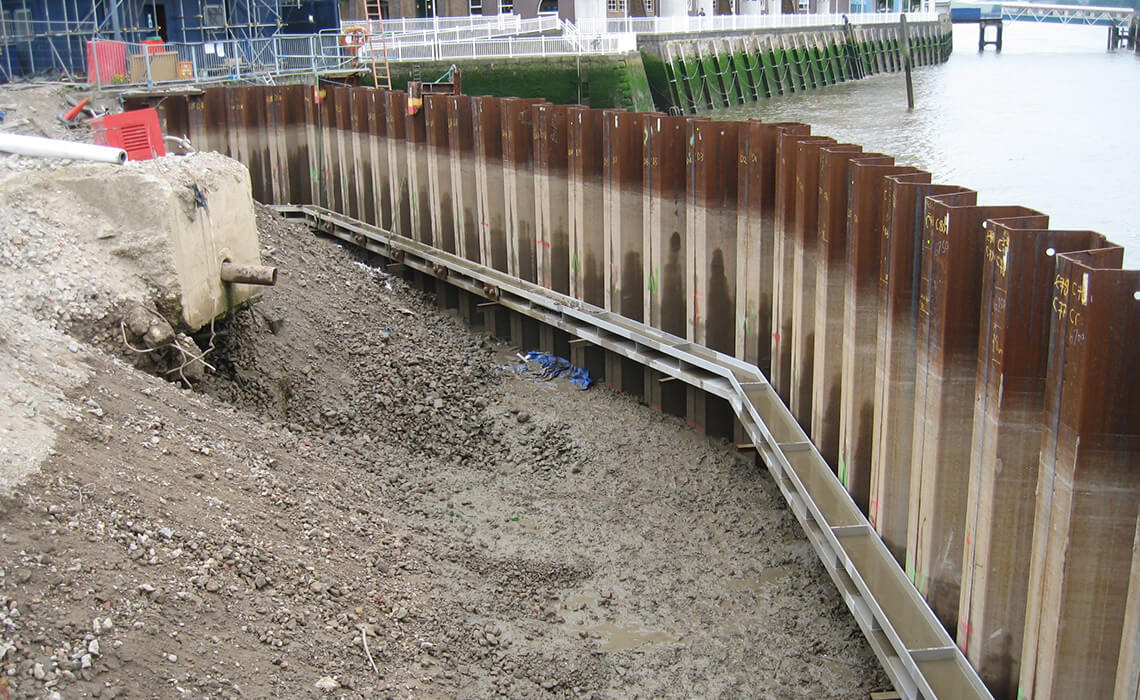Marine tie bars and the silent battle against the ocean’s destructive forces

Beneath the seemingly peaceful blue expanse lies a realm of extraordinary destructive power. Marine structures face an onslaught of forces that would decimate conventional buildings within a fraction of their expected lifespan. Saltwater creates an electrochemical battlefield where metals deteriorate rapidly. Powerful waves deliver relentless mechanical stress, while underwater currents constantly work to undermine foundations. Even microscopic marine organisms join the assault, boring into materials or creating drag-inducing colonies that amplify wave forces.
Despite these formidable challenges, the marine infrastructure worldwide, from coastal defences to oil platforms and underwater tunnels to bridge piers, continues to function year after year. This remarkable resilience stems not from chance but from sophisticated engineering developed to counter the ocean’s destructive potential.
Marine structural engineering has evolved through generations of trial, failure, and refinement. Ancient harbours frequently collapsed when unexpected storm surges revealed design weaknesses. Modern marine structures incorporate these historical lessons alongside advanced materials science and computational modelling to create systems capable of withstanding extreme conditions.
Unlike land-based structures primarily designed for vertical loads, marine infrastructure must contend with multidirectional forces that shift constantly with tides, weather patterns, and seasonal changes. This dynamic environment necessitates specialized components that maintain structural integrity despite simultaneous tension, compression, and torsional stresses.
Invisible guardians
Numerous specialized components work in concert to maintain stability within sophisticated marine structures. Massive foundation systems anchor into the seabed, providing a literal foothold against overwhelming forces. Specialized coatings create barriers against corrosive elements, while sacrificial anodes draw corrosion away from critical structural members.
The unheralded heroes in this engineering symphony are often the tie bar systems that create rigid connections between structural elements. These high-strength tension members prevent independent movement of connected components, ensuring the structure functions as a unified system rather than as separate pieces vulnerable to individual failure.
Engineers who constructed the massive specialized marine tie bar assemblies in the underwater foundation systems. These components distribute forces throughout the structure, preventing localized stresses that could otherwise initiate catastrophic failure chains. The seemingly simple tie bar concept is crucial in maintaining structural integrity through tremendous storms that regularly batter the crossing.
Combating the corrosive battlefield
The evolution of marine construction materials reflects humanity’s growing understanding of oceanic challenges. Early wooden structures succumbed to marine borers and rot. Cast iron brought strength but rapid deterioration through oxygen-deprived corrosion processes. Each material advancement has extended service life while reducing maintenance requirements.
Modern marine-grade alloys represent the culmination of this evolutionary process. Super-duplex stainless steels offer exceptional corrosion resistance while maintaining the tensile strength required for critical structural applications. Titanium components provide nearly unlimited service life for the most demanding environments, albeit at a premium cost.
The materials used in marine tie bar systems exemplify this sophistication. Unlike standard construction steel that would fail within months of seawater exposure, marine-grade tie bars incorporate precise metallurgical formulations that resist chloride attack while maintaining mechanical properties under extreme loading conditions.
Computational modeling meets practical experience
Today’s marine structures benefit from sophisticated design approaches that combine computational fluid dynamics, structural analysis software, and practical experience from previous installations. This multidisciplinary approach enables engineers to simulate decades of environmental conditions before construction begins, identifying potential failure modes and implementing preventative measures.
The design of effective Tie Bar systems exemplifies this balanced approach. Computer models calculate anticipated loads through simulated storm events, while practical knowledge informs connection details that accommodate installation realities and future maintenance requirements. This marriage of theoretical understanding with practical application creates marine infrastructure with unprecedented reliability.

